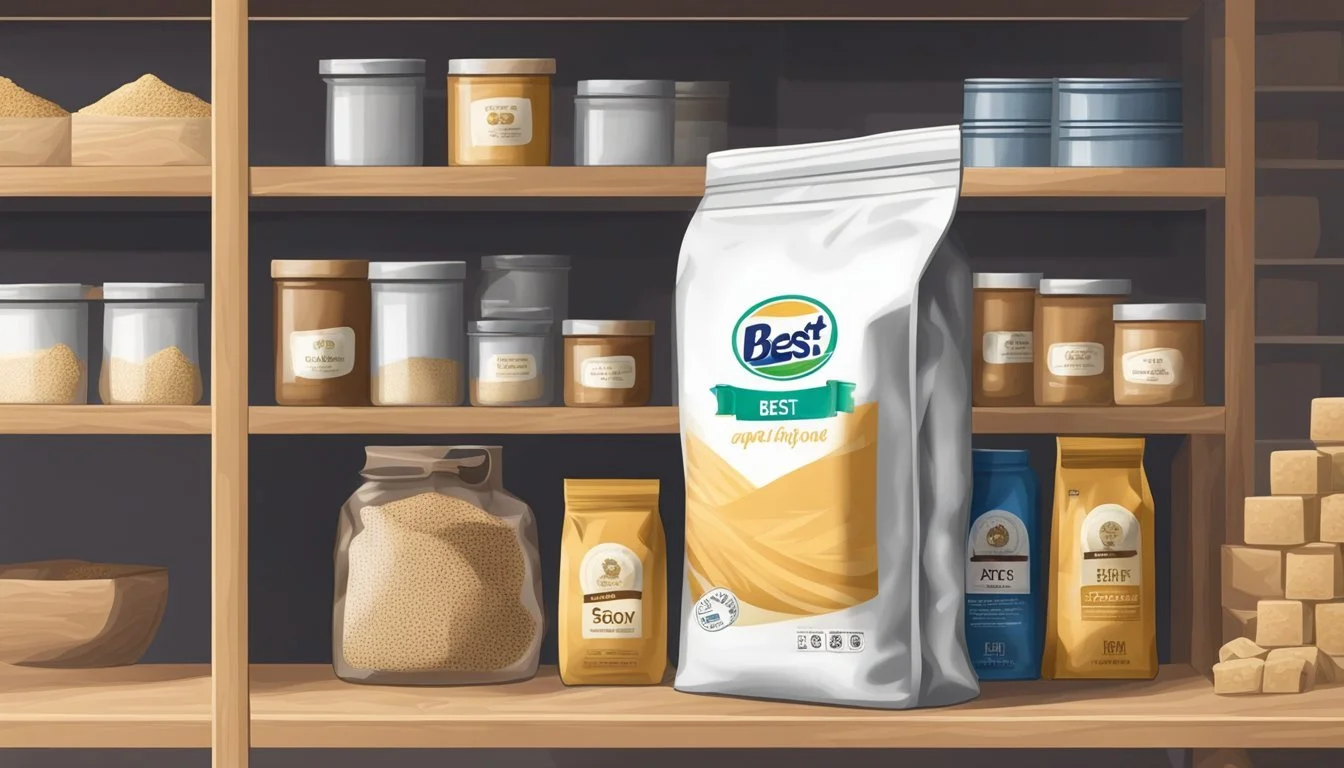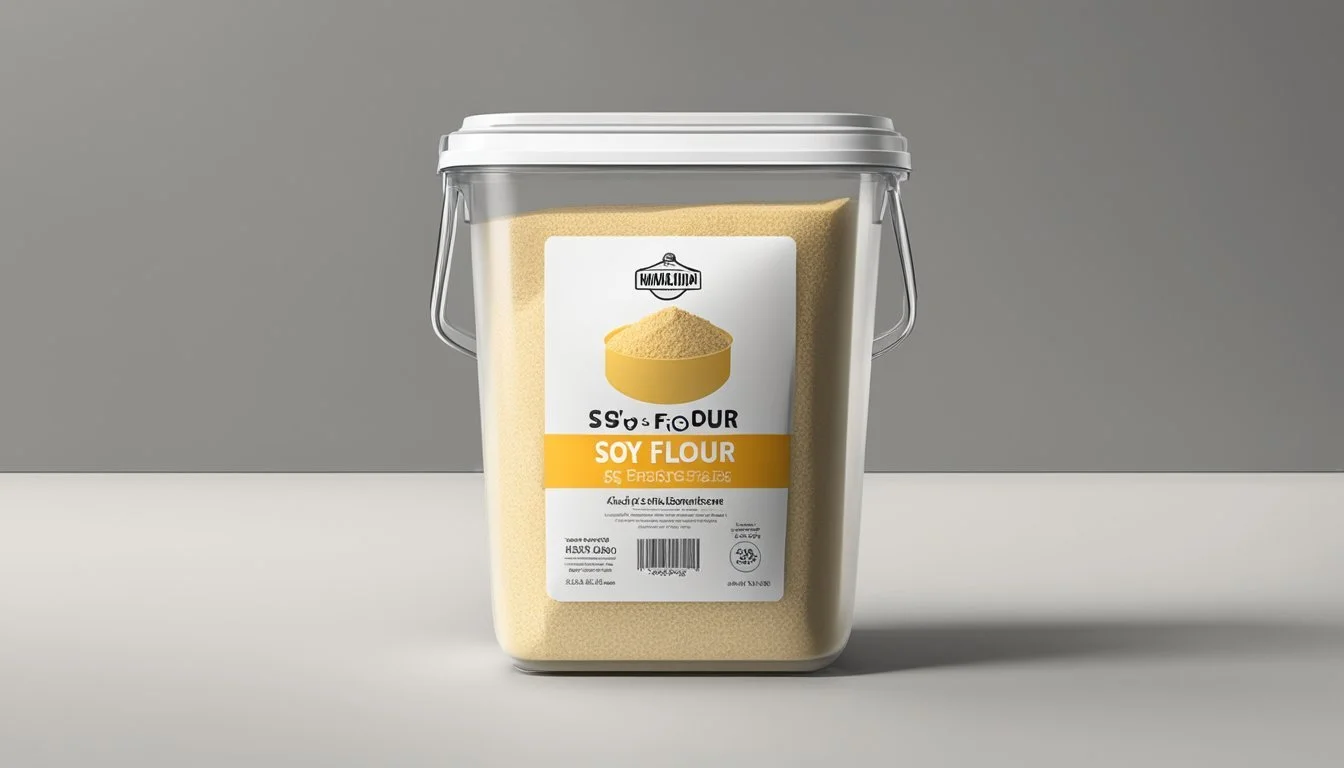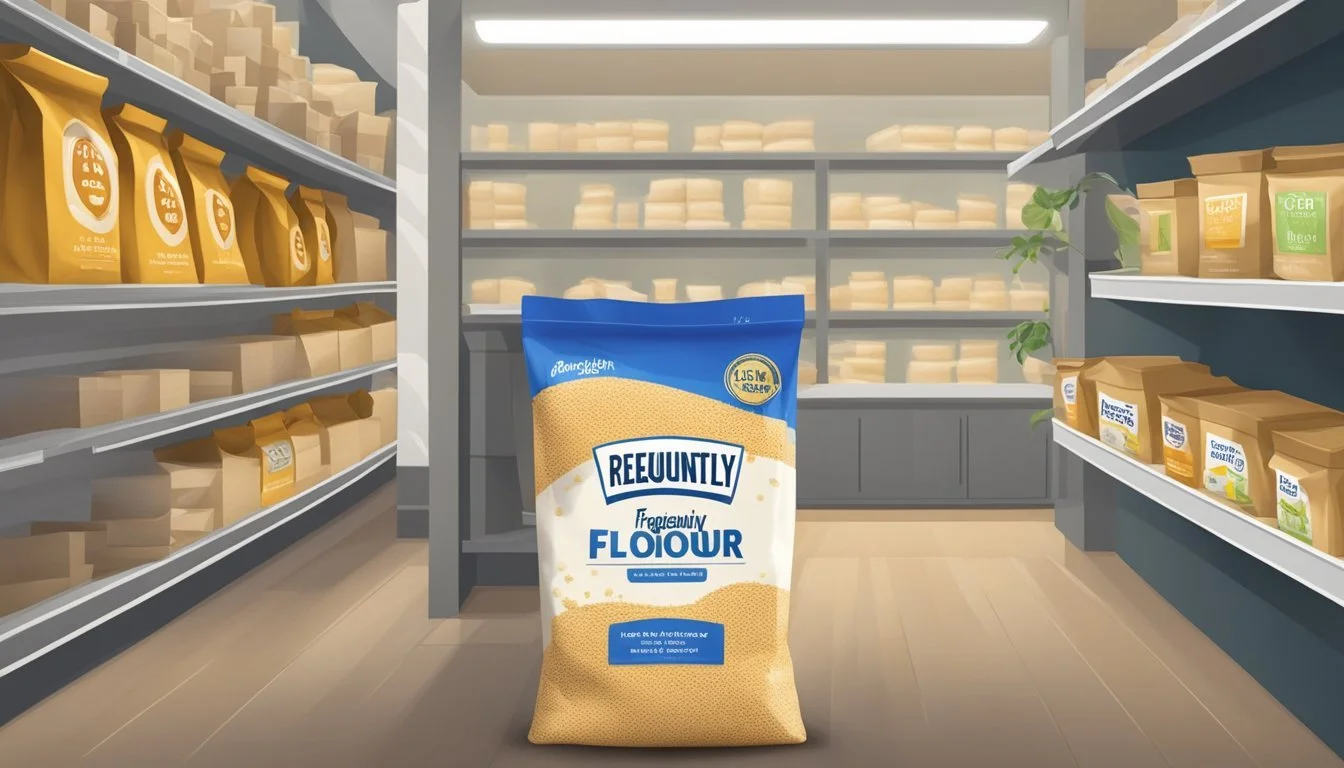How Long Does Soy Flour Last?
Shelf Life and Storage Tips
Soy flour (how long does soy flour last?), a product ground from soybeans, serves as a high-protein, gluten-free alternative to traditional wheat flour. It is increasingly popular in baking and cooking for those who follow a low carb or gluten-free diet. Typically, soy flour maintains its quality and freshness for six months to a year once opened, making it a durable pantry staple. The longevity of soy flour's freshness largely hinges on storage conditions. Keeping soy flour properly sealed and in a cool, dry place significantly aids in preserving its freshness and extending its shelf life.
The shelf life of soy flour can also be influenced by the type of flour, whether it is full-fat or defatted. Full-fat soy flour tends to have a shorter shelf life due to the natural oils present which can turn rancid. On the other hand, defatted soy flour, which has had its natural oils removed, may last longer. Regardless of type, all soy flour is best kept away from heat, moisture, and direct light, factors which can compromise its quality and reduce its shelf life.
Consumers should rely on both the best-by date and the telltale signs of spoilage, such as an off smell or taste, to assess the usability of soy flour. The most effective storage method for soy flour, much like other flours, involves an airtight container which could be made of any material including plastic, glass, or silicone. Through proper storage and attentiveness to the flour’s condition, the shelf life of soy flour can be maximized, making it a reliable ingredient in the kitchen.
Understanding Soy Flour
Soy flour is a versatile ingredient known for its high protein content and its usage as a gluten-free alternative to wheat-based flours.
Composition and Types
Soy flour is derived from ground soybeans, offering a protein-rich and gluten-free option among various flours. Its composition varies based on the processing method:
Full-Fat Soy Flour: Contains natural oils, presenting a higher fat content.
Defatted Soy Flour: Has the oils removed, reducing the fat content.
Enriched or Fortified Soy Flour: May include added nutrients to enhance its nutritional profile.
Soy flour can be categorized as a nut flour due to its origin from a legume, though it is not from nuts in a botanical sense. Compared to whole grain flours, soy flour has a finer texture and different baking properties due to its lack of gluten.
Nutritional Value
Soy flour is notable for its exceptional nutritional value:
Protein: About 40% protein content, making it a substantial protein source.
Fiber: High in dietary fiber, promoting digestive health.
Fat: Varies depending on whether it's full-fat or defatted.
Carbohydrates: A relatively low carbohydrate count, especially in defatted varieties.
Considering its nutrient composition, soy flour is often chosen by those seeking a higher protein, gluten-free flour option. It offers more protein than traditional all-purpose flour and many other gluten-free alternatives, making it a favored ingredient in various dietary regimes.
Storage Fundamentals
Proper storage is crucial to maximizing the lifespan of soy flour. Adhering to ideal conditions and using appropriate containers can significantly extend its usability.
Ideal Conditions
Soy flour maintains its quality best when stored in a cool, dry place such as a pantry or cupboard. Exposure to direct sunlight and high temperatures can hasten spoilage, so choosing a location away from heat sources ensures longevity.
Containers and Packaging
For optimal storage, one should transfer soy flour from its original packaging to an airtight container. This practice not only preserves its freshness but also protects it from odors. A plastic bag is not recommended for long-term storage unless it's sealed and placed within a container.
Recommended containers include:
Glass containers with airtight seals
BPA-free plastic containers with locking lids
Heavy-duty zipper-seal bags (for short-term storage or refrigeration)
Temperature and Humidity Factors
Managing temperature and humidity levels is key to preserving the shelf life of soy flour. The flour should ideally be stored in conditions with low humidity to prevent the absorption of moisture, which could lead to mold growth.
Fridge: Ideal for short-term storage to keep soy flour beyond the typical pantry shelf life.
Freezer: Suitable for long-term storage, extending the life for many months.
Storing soy flour in a fridge or freezer requires proper sealing to prevent moisture from affecting consistency and flavor.
Shelf Life and Expiration
Understanding the shelf life and expiration dates of soy flour is crucial for maintaining its quality and freshness. Proper storage can significantly affect the product's longevity and usability.
Reading the Label
When purchasing soy flour, individuals should carefully examine the label for any expiration date, best-by, or sell-by dates. These dates are a manufacturer's recommendation for peak quality. The label offers a helpful first point of reference to gauge how long the flour will retain optimal freshness.
Typical Lifespan of Soy Flour
Unopened soy flour has a typical shelf life of 6 to 12 months when stored in a cool, dry place. Once opened, soy flour's lifespan is shortened due to exposure to air; it's best to use it within 1 to 2 months. The presence of natural oils in soy can lead to quicker deterioration, and defatted soy flour will generally last longer than its full-fat counterpart.
Signs of Deterioration
Soy flour will exhibit clear signs of deterioration, signaling that it's time to discard the product.
Odor: An off or rancid smell is a clear indicator of spoilage.
Texture: Clumping or moisture indicates potential spoilage.
Appearance: Any discoloration or the presence of mold suggests that the flour should not be used.
By paying attention to the label, understanding the typical lifespan, and recognizing signs of deterioration, consumers can ensure they use soy flour while it's still at its best quality.
Quality Indicators and Spoilage
Identifying the freshness of soy flour involves inspecting it for visual changes, assessing its smell and taste, and checking for signs of mold or pest infestation. These indicators are critical for ensuring the quality and safety of the flour.
Visual and Textural Clues
A prime indicator of quality in soy flour is its visual appearance and texture. Fresh soy flour should be powdery and uniform in color. Any discoloration or the presence of clumps may signal that the flour has absorbed moisture or is starting to spoil. Additionally, the flour should be free from foreign particles or impurities. Signs to look out for include:
Changes in color, indicating spoilage or oxidation
Clumps indicating moisture has entered the packaging
Odor and Taste Assessment
One of the most reliable ways to determine the quality of soy flour is by its smell and taste. Soy flour should have a slightly nutty or neutral odor. The development of a rancid, sour, or musty odor indicates that the oils in the flour have begun to oxidize, leading to rancidity. If the flour has a rancid or altered taste, it should not be used for consumption.
Mold and Pest Infestation
The presence of mold or pests, such as weevils, bugs, or other insects, is a clear sign that soy flour has gone bad. Mold can manifest as visible spots or a fuzzy growth, while pest infestation might be evident through tiny holes in the bag or physical remnants of the pests themselves. At any indication of mold or pests, the soy flour should be discarded immediately.
Mold: Visible spots or growths
Pests: Presence of weevils, bugs, holes in packaging
Maintaining soy flour's integrity involves proper storage and regular quality checks based on the visual, olfactory, and tactile cues provided.
Using Soy Flour Effectively in Recipes
Soy flour offers a high-protein, gluten-free alternative for various recipes, particularly in baking where its unique properties affect both the structure and flavor of the final product.
Baking Considerations
When using soy flour in baking, one must consider the absence of gluten, which typically provides structure and elasticity to baked goods. To mitigate this, recipes often require a mix of soy flour with other flours, like all-purpose or cake flour, to maintain a desirable texture. Baking powder may be added to help the mixture rise, as soy flour alone doesn't support the rise most baked items require. Adjusting the proportion of soy flour in recipes is crucial; an excessive amount can significantly alter the taste and structure—potentially leading to a denser product.
Soy Flour as a Substitute
To substitute soy flour for all-purpose flour in baking recipes, a general guideline is to replace up to 25% of wheat flour with soy flour to maintain the integrity of the flavor and structure of the cake or bread.
Recipe Type Soy Flour Substitution Ratio Additional Notes Cake 1:4 (1 part soy flour to 4 parts cake flour) Consider adding more baking powder to assist in rise Bread 1:4 (1 part soy flour to 4 parts all-purpose flour) Gluten content is crucial for bread; limit soy flour accordingly
It remains important to remember that while soy flour can enrich the nutrient profile, offering higher protein and fiber content, it will impart a distinct, slightly nutty flavor to baked goods. The balance between taste, nutritional benefits, and structural requirements is key to the successful use of soy flour in recipes.
Safety and Foodborne Concerns
Maintaining food safety is crucial when it comes to handling soy flour, as it is not immune to foodborne illness risks. Proper storage and disposal practices are key to ensuring its safety for consumption.
Preventing Foodborne Illness
Proper storage of soy flour can significantly diminish the risk of foodborne illnesses. Soy flour should be kept in a cool, dry place and sealed tightly after opening. Consumers can reduce the chances of bacterial growth, such as pathogenic E. coli, by following these guidelines:
Storage Temperature: Keep the soy flour in a refrigerator or freezer to extend its shelf life.
Sealing: Use airtight containers to protect it from moisture and pests.
Hygiene: Regularly clean the storage area to prevent cross-contamination.
To further enhance safety, consumers should always use soy flour before its expiration date and look out for any recalls that might relate to their products.
Disposing of Expired Flour
When soy flour passes its expiration date or shows signs of spoilage, it's vital to dispose of it safely. Here is how to do so responsibly:
Compost bin: Soy flour can be composted, contributing to a sustainable cycle and reducing food waste.
Trash: If composting is not an option, ensure the soy flour is sealed in a bag before disposing of it in the trash to avoid attracting pests.
Utmost care during the disposal process minimizes environmental impact while upholding food safety measures.
Frequently Asked Questions
In this section, readers will find concise answers to common inquiries about extending the shelf life of soy flour and suggestions for using flour that is nearing the end of its freshness.
Extending Shelf Life
Maintaining the quality of soy flour hinges on proper storage conditions. To maximize its shelf life, soy flour should be stored in a cool, dry place away from direct sunlight. If the bag is unopened, it can retain its quality for several months up to a year. For added protection, individuals can store the flour in an airtight container and place it in the refrigerator or freezer. Here, the low temperatures slow down oxidation and inhibit the growth of mold and bacteria.
Table: Optimal Storage Conditions for Various Types of Flour
Type of Flour Storage Container Location Expected Shelf Life Whole Wheat Flour (how long does whole wheat flour last?) Airtight Pantry/Freezer 1-3 months/6-8 months Self-Rising Flour Airtight Pantry 4-6 months Buckwheat Flour Airtight Pantry/Freezer 1-2 months/2-4 months Coconut Flour Airtight Pantry/Freezer 3-6 months/6-12 months Almond Flour Airtight Pantry/Freezer 2-4 months/6-12 months Gluten-Free Flours Airtight Pantry/Freezer Varied Nut Flours (e.g. Soy) Airtight Pantry/Refrigerator/Freezer Few months/1 year
Alternate Uses for Aging Flour
Flour that is past its peak but not yet spoiled can often be utilized in applications beyond conventional baking. For instance, aging soy flour can serve as a thickener for sauces and soups, or act as a binding agent in homemade veggie burgers or meatballs. The key is to ensure the flour has not developed a sour smell or visible mold, indicators that it should be discarded. Additionally, less-than-fresh flours like bran or germ might add a pleasing texture to granolas or be mixed into garden compost as a carbon-rich ingredient.
By adhering to these storage tips and alternative uses, individuals can prolong the useful life of their flour investments and minimize waste.









